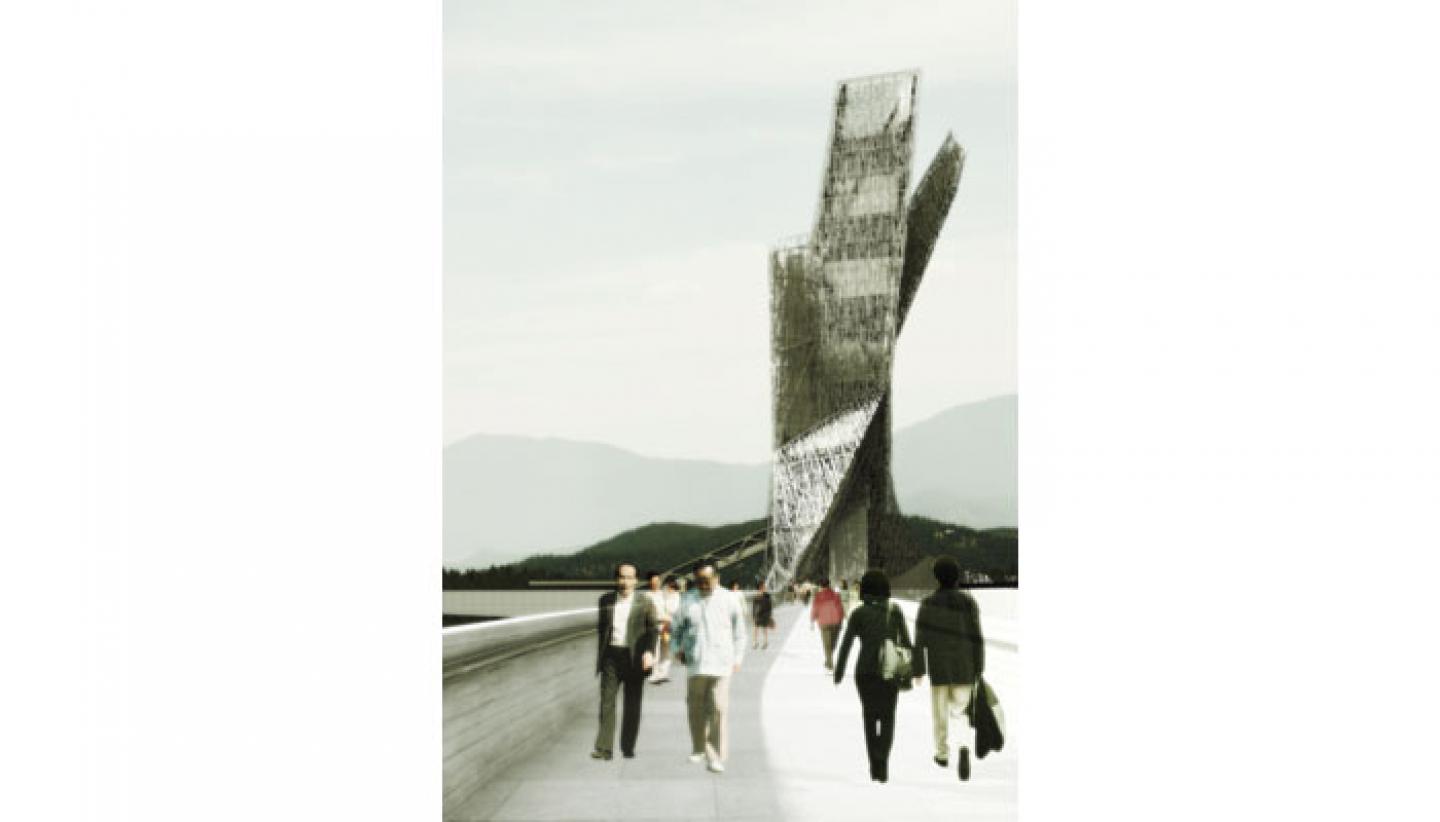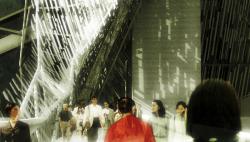Through an RFQ process, the New South Town of Miyi County in south eastern China selected the Los Angeles based team of Studio SHIFT and SWA Group to create a master plan for the developing area. As part of the new plan, Studio SHIFT has designed a tower containing various programs aimed at promoting the region’s heritage and natural amenities. The tower sits at the edge of the Anning River and will mark the transition between the new development to the north and the new wetlands, leisure and agricultural districts to the south.
The Miyi Tower rises from the southern end of a kilometer long promenade that stretches from a high density residential and cultural hub devoted to regional arts. The promenade itself consists of a series of parks and public spaces designed by SWA Group to highlight accessibility to the river. It then tapers between rising paths which form the amphitheater at the tower’s base. The paths converge and then continue as a bridge across the river and as an overlook affording views of reclaimed wetlands and the lake beyond. The designers were intent on utilizing natural and mechanical means of filtration to produce clean water, converting a highly polluted river into a usable amenity for residents and visitors. This new amenity takes the form of a series of lakes, wetlands and waterways which lend form to the new districts in the master plan.
The tower itself, which is to act as a major landmark per the Miyi government’s request, is designed as an educational building for residents and the multitude of tourists that visit every year. Because the town is known for its abundance of sunshine and temperate climate, only half of the building’s program elements are enclosed. These double height spaces alternate with unenclosed areas and rise around a vertical core, their alignment shifting toward different views at every floor. An auditorium, exhibition spaces and restaurants featuring local cuisine can be found on the interior while open-air floors are used as event spaces, gardens and an observation deck. The pairs of lower and upper enclosed spaces are joined by structures which act as light monitors. These light monitors, of which there is a third at the highest level, are aligned to take advantage of different lighting conditions throughout the day.
The tower is sheathed in a very porous yet continuous skin that gives the various programs their unified form. As porous building skins are often treated as opaque modules with subtracted holes (i.e. perforated skins) Studio SHIFT deliberately created the inverse. On the Miyi Tower, rather than defaulting to a technique of perforation, they created a pattern of objects in space mounted to a light frame. This inversion allows the skin to take on a rather ethereal effect and evokes the shimmering surface of the river below.
2008
2009




.jpg)
.jpg)

